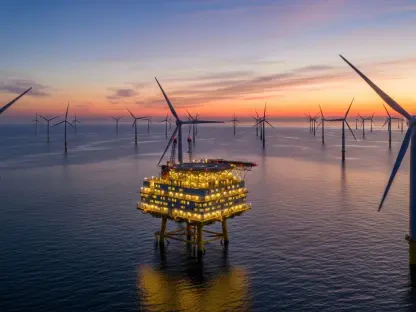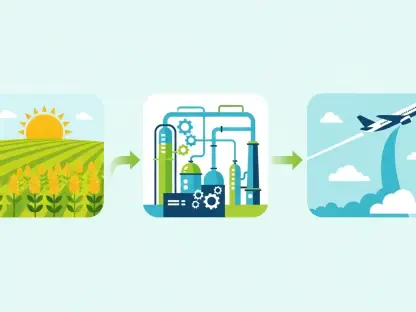Indonesia is undergoing a significant transformation in its energy sector, moving from fossil fuels to sustainable energy sources. To ensure that this transition benefits all segments of the population, particularly women, gender inclusivity needs to be at the forefront of this shift. Recognizing the essential role of women in Indonesia’s energy transition, the current gender disparities, and strategies for integrating women’s perspectives into energy policymaking and implementation could provide a more equitable and effective approach to achieving these goals.
The Current State of Indonesia’s Energy Transition
Indonesia is one of the largest coal producers in the world, making its transition to sustainable energy particularly challenging. Despite these hurdles, the nation has shown a strong commitment to reducing carbon emissions, as evidenced by policy frameworks like Law No. 31 of 2009 and the ratification of the Paris Agreement in 2016. The government has also set an ambitious target to achieve net-zero emissions by 2060. However, the economic implications of moving away from coal are significant. The coal industry directly employs around 250,000 workers, and any rapid transition could disproportionately affect economically disadvantaged communities. These communities are already highly vulnerable to the impacts of climate change, such as extreme weather events.
Additionally, while the policies focus on reducing carbon footprints and shifting to renewable energy sources, they must also address the social and economic impacts of this transition. For a country that produces 770.85 million tonnes of coal in 2023 alone, transitioning to green energy involves careful planning to prevent widespread economic disruption. It’s crucial to ensure that the transition provides equitable opportunities and support for all affected communities, emphasizing the importance of fairness and inclusivity in the approach.
Gender Disparities in the Energy Sector
Despite the robust policies in place, one glaring gap is the underrepresentation of women in the energy sector. In 2022, women made up only 5% of decision-makers in energy-related roles. This stark underrepresentation perpetuates gender biases and creates policies that often overlook women’s unique needs and perspectives. Women are often on the front lines when it comes to managing household energy, making their insights crucial for developing effective and sustainable energy solutions. Yet, their voices are seldom heard in key decision-making processes. This lack of representation hinders the creation of inclusive policies that could lead to more equitable outcomes for all.
The inclusion of women in energy decision-making processes is essential for creating comprehensive and holistic policies. Women bring valuable perspectives, particularly in areas such as household energy management, which are crucial for understanding the practical implications of energy policies. Encouraging more women to take on leadership roles within the energy sector and ensuring their participation in policymaking can lead to more balanced and effective solutions that benefit the entire population.
The Economic and Social Impact on Women
Women in Indonesia face multiple challenges that are exacerbated by the energy transition. As the country moves away from fossil fuels, women are disproportionately affected by the resulting job losses and economic instability. These challenges are further compounded by existing gender inequalities, such as lower wages and limited access to education and professional development opportunities. Additionally, women in the Global South, including Indonesia, often bear the brunt of the adverse effects of climate change. They are more likely to experience gender-based violence, increased unpaid labor, and reduced access to essential services. These social and economic impacts make it imperative to include women in the planning and implementation of energy transition policies to create a more just and equitable society.
Addressing these disparities requires targeted interventions and inclusive policies that recognize and mitigate the unique challenges faced by women. Providing support for women affected by job losses, creating training and educational opportunities, and ensuring access to essential services are crucial steps in this direction. By doing so, the energy transition can become an opportunity to address existing gender inequalities and improve the overall well-being of women and their communities.
The Role of Policy and Inclusive Frameworks
Several policy frameworks aim to promote gender inclusivity in Indonesia’s energy sector. The Just Energy Transition Partnership Secretariat’s 2023 investment and policy blueprint emphasizes the equitable distribution of risks and opportunities, aligning with human rights and gender equality principles. Presidential Instruction No. 9 of 2000 also mandates the consideration of gender perspectives in developmental planning. However, the implementation of these frameworks often lacks concrete mechanisms to ensure women’s meaningful participation. Traditional societal roles and inadequate facilities for public engagement further impede women’s involvement. Therefore, there is a crucial need for strategies that can operationalize these policies effectively.
Implementing these frameworks requires a multi-faceted approach that includes creating safe and accessible spaces for women to participate in public engagement, providing training and support for women in leadership roles, and ensuring that gender considerations are integrated into all aspects of energy policymaking. By doing so, Indonesia can create an inclusive energy sector that leverages the talents and insights of all its citizens, ultimately leading to more sustainable and equitable outcomes.
Global Examples of Successful Gender Inclusion
Around the world, there are examples of how gender inclusion can lead to successful energy transitions. Morocco’s solar power project, for example, saw women’s participation lead to community-beneficial solutions, rather than male-centric financial compensations. Women in Morocco prioritized infrastructure like drainage and irrigation channels, which had long-term benefits for the whole community. These global examples underline the importance of including women in energy governance. Women’s extensive roles in household and community management make their perspectives invaluable for addressing issues related to energy and resource accessibility. Such inclusive approaches can lead to more balanced and sustainable outcomes.
These examples highlight the positive impact that gender inclusion can have on energy projects and policies. By learning from these successful models, Indonesia can develop strategies that prioritize women’s participation and ensure that their voices are heard. This can lead to more effective and equitable energy policies that address the needs of the entire population, ultimately contributing to a more sustainable and inclusive energy transition.
Strategies for Enhancing Gender Inclusion
To foster a truly equitable energy transition, several strategies can be employed to enhance gender inclusion. One crucial step is to ensure the inclusion of sex-disaggregated data in energy planning processes. This data is vital for understanding the distinct challenges faced by different gender groups and formulating targeted solutions. Empowering women to participate meaningfully in energy governance is another critical strategy. This includes adjusting meeting times and locations to accommodate women’s schedules, providing childcare facilities during public engagements, and ensuring safe and accessible environments for women to voice their opinions. Promoting educational and professional development opportunities for women in the energy sector is equally important. This can help bridge the gender gap in decision-making roles and equip women with the skills needed to contribute effectively to the energy transition.
These strategies are essential for creating an inclusive and equitable energy sector that benefits all members of society. By addressing the specific needs and challenges faced by women, Indonesia can ensure that the energy transition is not only sustainable but also fair and just. This approach can lead to more effective and innovative solutions that leverage the talents and insights of all citizens, ultimately contributing to a more resilient and inclusive energy future.
The Holistic Vision for Indonesia’s Energy Future
Indonesia is experiencing a major shift in its energy landscape, moving away from fossil fuels to embrace more sustainable energy sources. This transition, however, must be inclusive to ensure it benefits the entire population, particularly women. Historically, women have been underrepresented in the energy sector, both globally and in Indonesia. Addressing this imbalance is crucial for several reasons.
First, women often manage household energy consumption, making their insights valuable in shaping sustainable practices. Second, empowering women in the energy workforce can lead to diverse perspectives, fostering innovative solutions. Third, equitable participation in energy policymaking can help ensure that women’s specific needs and challenges are addressed.
To achieve a gender-inclusive energy transition, several strategies can be implemented. Increasing education and training opportunities for women in science, technology, engineering, and math (STEM) fields is vital. Additionally, creating supportive policies and work environments that encourage women’s participation and leadership in the energy sector is essential. Governments and organizations should also actively engage women in policymaking processes related to energy transition.
By focusing on gender inclusivity, Indonesia can ensure that its move toward sustainable energy not only addresses environmental concerns but also promotes social equity, leading to a more comprehensive and successful energy transformation.









